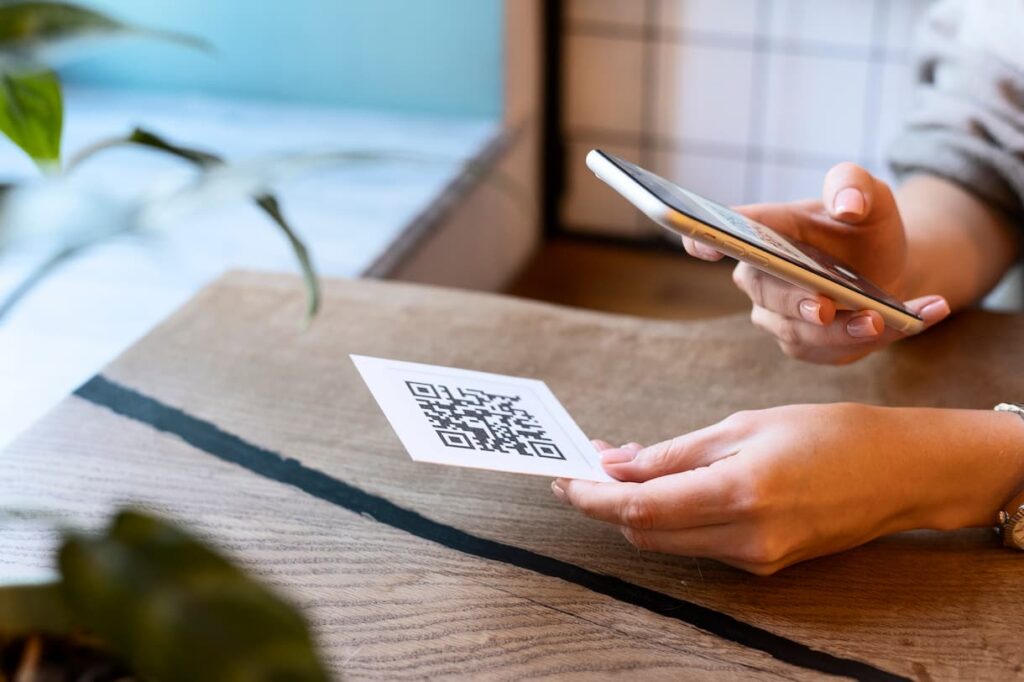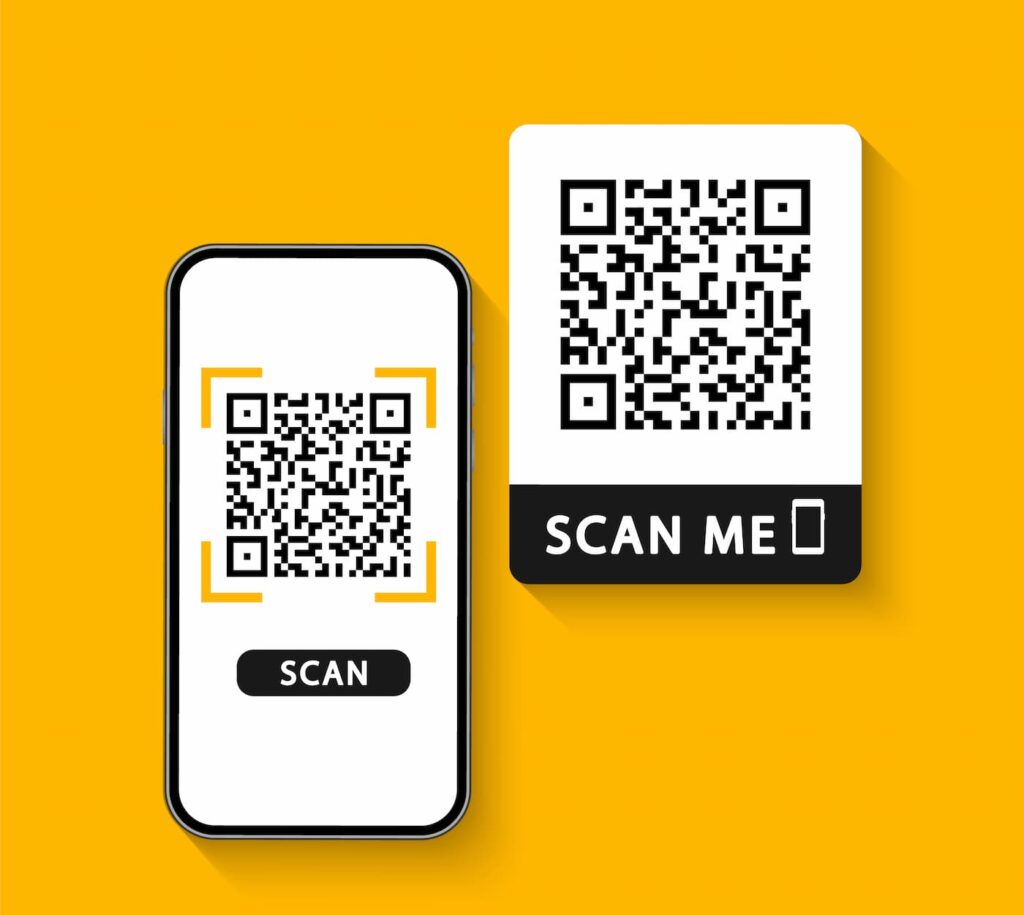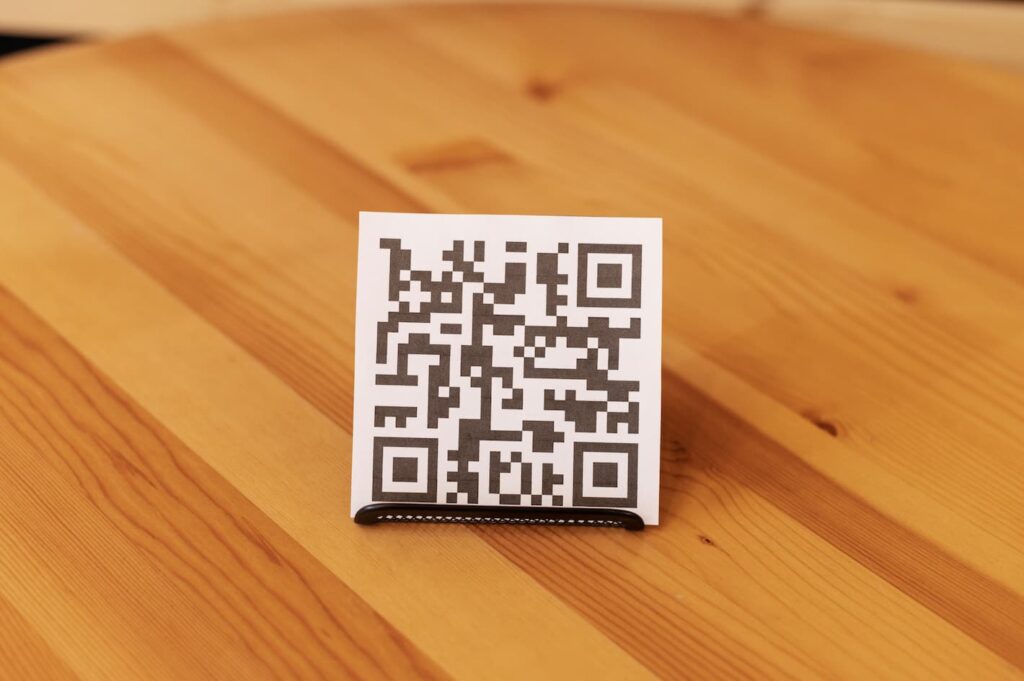
Printing QR codes for a marketing campaign can be painful if you don’t know what size to print. The size of a QR code is an essential element in your campaign’s success, as too small a code and QR code scanners won’t do the job.
The ideal QR code size depends on your needs and the deliverable you plan to use —banners, fliers, stickers, and many more.
So, your trusted QR code generator will help you sort out all the nuts and bolts to QR code sizing, so your QR code-based marketing efforts run smoothly and you can enjoy all the benefits of QR code technology.
Table of Contents
- Why Size Matters
- What Plays a Role in QR Code Size?
- A QR Code’s Minimum Resolution
- Minimum QR Code Size
- QR Code Size — FAQs
- How small can a QR code be on a business card?
- How small can a QR code be printed?
- What factors determine the size of a QR code?
- How does the version affect QR code size?
- Is there a maximum size limit for QR codes?
- How does the amount of data affect QR code size?
- Can I resize a QR code without affecting its functionality?
- Does the error correction level impact QR code size?
- Are there guidelines for choosing the size of a QR code?
- Can I make a QR code smaller by reducing its error correction level?
- Are there tools available to help determine the appropriate size for a QR code?
- Wrap-Up
Why Size Matters
QR code dimensions are important for several reasons relating to functionality and readability. When printing QR codes, you need to consider several aspects.
Scannability

The most critical aspect of a QR code is its ability to be scanned accurately. If a QR code is too small, it may become difficult for a scanning device to capture all the necessary information, leading to scanning errors. Ensuring an adequate size helps maintain a clear and scannable code.
Also see: How to Scan a QR Code Online Without an App on Android and iOS!
Reading distance
The size of a QR code is directly related to the distance from which users successfully scan it. Larger codes can be scanned from a greater distance, providing more flexibility in how users interact with the code.
Error correction
QR codes often incorporate error correction mechanisms to ensure accurate scanning, even if the code is damaged or partially obscured.
The size of the QR code can affect the level of error correction applied, influencing its robustness against potential issues during printing or scanning.
Print quality

Printing a QR code that is too small may result in a loss of detail and clarity. Choosing an appropriate size ensures that the printed code maintains a high resolution, reducing the risk of printing artifacts and enhancing overall print quality.
Also see: How to Run a Proper QR Code Test, Easily and Effectively
Application-specific requirements
Different applications or use cases may have specific requirements regarding QR code size. For example, marketing materials such as banners and posters may benefit from larger, more visually prominent QR codes; space-constrained formats such as business cards or menus may require smaller codes.
Also see: QR Code Poster: Leverage Your Print Marketing by Introducing QR Codes
Also see: How to Create a Menu QR Code in 5 Simple Steps
Quiet zone
The white margin around a QR code, known as the “Quiet Zone,” is crucial for preventing interference and ensuring accurate scanning.
Following recommended guidelines for the size of the quiet zone is essential for maintaining the code’s integrity.
User experience
QR codes are often intended for user interaction, and well-designed code contributes to a positive user experience. An appropriately sized QR code will likely be noticed, recognized, and scanned by users.
What Plays a Role in QR Code Size?
The size of a QR code is affected by several elements that need to be considered for it to be effective.
The distance-to-size ratio
The scanning distance of a QR code about its size is called the distance-to-size ratio. This element is essential to user scannability. The QR code distance to the scanning device should be around ten times the code’s size.
For example, if your QR code is 3 cm in size, it should ideally be scanned from 30 cm. This is critical to remember when printing QR codes on deliverables such as flyers, posters, or even email signatures.
Any deviation from the right distance-to-size ratio will affect the code’s scalability regardless of the device used.
The amount of encoded data
QR codes come in different versions, each capable of storing a certain amount of data. Higher versions sport more modules —black and white squares— and can therefore store more information.
The version of a QR code is determined by its size. Version 1 is the smallest and has the least data capacity, while higher versions —like dynamic QR codes— offer larger physical dimensions and greater data capacity.
The error correction level
Error correction is used to ensure that the QR code remains readable even when partially obscured, damaged, or distorted.
Redundancy is added to the encoded data so that even if parts of the QR code are missing or corrupted, the original data can still be reconstructed accurately.
Today, QR code technology uses four error correction levels (ECLs).
- Level L (Low) – 7%
- Level M (Medium) – 15%
- Level Q (Quartile) – 25%
- Level H (High) – 30%
The higher the ECL, the more you can ensure the code remains readable and effective under tough conditions. However, this will increase the size as more data modules need to be added to increase the data redundancy.
The level of customization
Since you can add logos, images, and frames to a QR code, you must keep that level of customization in mind. Codes containing all these additional elements would need to be bigger, so it’s best to find the sweet spot between your marketing needs and the code’s functionality.
A QR Code’s Minimum Resolution

The minimum resolution for a QR code depends on aspects such as error correction level and the intended scanning distance.
QR codes come in different versions, with each version supporting different amounts of data and requiring a minimum size for proper scanning.
Here are a few general guidelines for minimum QR code resolution based on distance:
Close Range — a few inches to a foot
For short scanning distances, a lower resolution may be acceptable. A resolution of around 150 DPI is often sufficient for small QR codes.
Medium Range — a few feet
As the scanning distance increases, a higher resolution is generally needed. A resolution of 300 DPI or higher may be recommended for medium-range scanning.
Long Range — several feet or more
For longer scanning distances, especially when the QR code is small, a resolution of 600 DPI or more may be necessary for reliable scanning.
It’s important to note that these are general guidelines, and the specific requirements can vary based on factors such as lighting conditions, the quality of the printing material, and the capabilities of the scanning device.
Additionally, the QR code error correction level can impact its minimum resolution.
Higher error correction levels allow the QR code to remain readable even if it’s partially damaged or obscured, but they may require larger sizes or higher resolutions.
Minimum QR Code Size

A “micro QR code” is the smallest QR code that can be scanned with a QR code scanner —namely a smartphone. Although you can print QR codes sized 1 x 1 cm, the QR code minimum size is often rated at 2 x 2 cm so it can be scannable.
QR Code Size — FAQs
When sizing the QR code, it’s important to mind the entire QR code dimension and other critical aspects.
How small can a QR code be on a business card?
For optimal use on business cards, it is recommended to aim for a QR code size of approximately 0.8 x 0.8 inches.
This recommendation is based on the dimensions of a standard business card, which is typically 3.5 x 2 inches (9×5 cm).
While enlarging the QR code is an option, shrinking it is not advisable, as doing so may result in it becoming unscannable or too inconspicuous.
How small can a QR code be printed?
The QR code can be printed as small as 1 x 1 cm, but for compatibility with most smartphones, it is recommended to have a minimum size of 2 x 2 cm for the QR code label to ensure reliable scanning.
What factors determine the size of a QR code?
The size of a QR code is primarily influenced by its version and the amount of data it needs to store. Versions range from 1 to 40, with each supporting different amounts of data and requiring a proportional amount of space.
How does the version affect QR code size?
Higher versions accommodate more data but also require larger physical dimensions. Each version increases both the number of rows and columns of modules, thereby affecting the overall size.
Is there a maximum size limit for QR codes?
QR codes can theoretically be very large, limited only by practical constraints such as printing surface or scanning distance. However, excessively large QR codes may become difficult to scan accurately.
How does the amount of data affect QR code size?
More data requires a higher version of QR code, which in turn increases its physical size. As the amount of data increases, so does the complexity of the QR code, needing more modules and consequently larger dimensions.
Can I resize a QR code without affecting its functionality?
In most cases, yes. You can resize a QR code proportionally as long as it remains above the minimum size requirement and maintains the required quiet zone (the empty space surrounding the code). Shrinking a QR code too much, however, may render it unreadable.
Does the error correction level impact QR code size?
Yes, the error correction level affects QR code size. Higher error correction levels allow the QR code to remain functional even if parts of it are damaged or obscured. However, this comes at the cost of increased data redundancy, leading to larger QR codes.
Are there guidelines for choosing the size of a QR code?
Yes, it’s recommended to consider the distance from which the code will be scanned and the resolution of the scanning device.
Larger codes may be necessary for scanning from a distance or with low-resolution cameras, while smaller codes may suffice for close-range, high-resolution scans.
Can I make a QR code smaller by reducing its error correction level?
Yes, lowering the error correction level can reduce the size of a QR code. However, this increases the risk of the code becoming unreadable if it is damaged or partially obscured.
Are there tools available to help determine the appropriate size for a QR code?
Yes, many QR code generators provide options to customize the size and error correction level based on your needs. Additionally, there are online resources and guidelines available to assist in choosing the optimal size for your QR code based on its intended use.
Wrap-Up
In conclusion, the size of a QR code plays a crucial role in its functionality and accessibility. While it can technically be printed as small as 1 x 1 cm, a prudent approach is to consider the practicality of the intended application.
For optimal performance and ease of scanning, especially with smartphones, a minimum size of 2 x 2 cm is recommended.
Striking the right balance between size and functionality ensures that QR codes effectively serve their purpose, whether it’s on business cards, labels, or any other application where quick and reliable scanning is essential.
As technology continues to evolve, staying mindful of QR code dimensions ensures a seamless and user-friendly experience for both creators and consumers alike.
